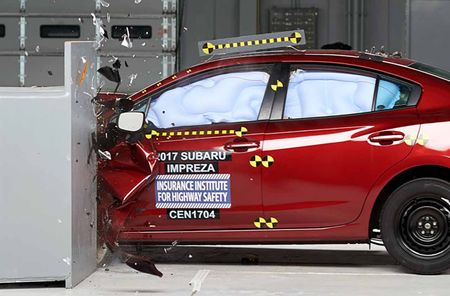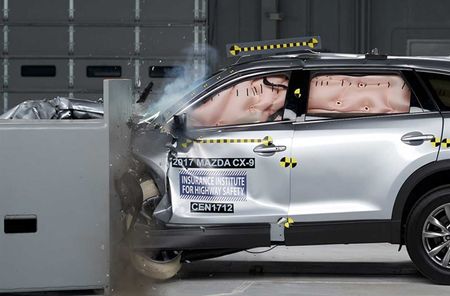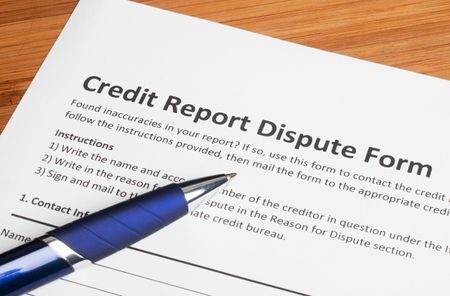8 Ways to Cut Insurance Costs for Teen Drivers
You can prevent your auto premiums from skyrocketing.


My 16-year-old son is about to get his license, and I’m afraid of what that might do to our auto-insurance rates. How can we lower insurance costs?
You’re right to be worried -- your auto-insurance premiums are likely to skyrocket when your teenage son starts driving. But a few key moves can help you cut costs significantly.
1. Raise your comprehensive and collision deductibles to at least $1,000, which lowers your premiums and prevents you from filing small claims that could jeopardize a claims-free discount. Add some more money to your emergency fund so you’ll have the cash to pay the deductible if anyone in your family does have an accident.

Sign up for Kiplinger’s Free E-Newsletters
Profit and prosper with the best of expert advice on investing, taxes, retirement, personal finance and more - straight to your e-mail.
Profit and prosper with the best of expert advice - straight to your e-mail.
2. Drop collision and comprehensive coverage entirely on older cars that are worth little more than the deductible. You may be paying more in premiums than you could ever get back from the insurer, even if the car is totaled. Look up your car’s value on Kelley Blue Book .
3. Get a safe car. Having your child drive a safe car will help you sleep easier and keep your auto-insurance rates under control, too. Check safety ratings at the Insurance Institute for Highway Safety.
4. Encourage your kids to get good grades. Most insurers offer a big discount for young drivers who maintain at least a B average in high school or college. College kids generally need to take at least 12 credits to qualify for the discount, says Trisha Mujadin, an independent insurance agent with NRG, a Seattle insurance agency.
5. Tell your insurer if your child goes away to college. If your child goes to school more than 100 miles away and doesn’t take a car, you can usually get a big break on your premiums but still have coverage when he or she comes home for vacation.
6. Ask about other discounts for teenage drivers. Some insurers offer discounts for driver-safety programs, cutting costs if the kids take a special class, watch a DVD, or read a driver-safety book and take a test. Ask your insurer what your kid needs to do to qualify.
7. Make the most of multipolicy discounts. You’ll usually get a break on your auto insurance and your homeowners insurance if you keep both policies with the same company. You may get an additional discount if you include an umbrella policy, which provides extra liability coverage beyond your auto-insurance limits and can be particularly valuable when you have a teenage driver.
8. Shop around. Some insurers offer much better deals than others for teenage drivers, so it’s important to compare costs. The insurance company that offered the best rate for you and your spouse may have some of the highest rates when you add a teenage boy to the policy (and it’s almost always better to add the child to your policy rather than have him get his own policy). “One company we work with is really great with young drivers and another is horrible,” says Mujadin.
You can get price quotes from several insurance companies at www.insurancerates.com (a new site by InsWeb.com) or get personalized service from an independent insurance agent who works with many companies (you can find a local independent agent at www.iiaba.org). You may not want to switch from a longtime insurer just to save a few dollars, however, because your current company may be less likely to raise your rate or drop you if your child has an accident, says Mujadin. “If you stay with the company where you’ve been, there’s some value to that -- there’s more room for forgiveness.” Also keep in mind that if you’ve been getting a multipolicy discount, your homeowners-insurance rate might rise if you take your auto-insurance business elsewhere.
One thing you don’t want to do in an attempt to reduce your premiums is skimp on liability coverage. Mujadin recommends liability limits of at least $250,000 per person, $500,000 per accident and $100,000 for property damage (or a policy with a “combined single limit” of $500,000, when available, which doesn’t limit the coverage to $250,000 per person involved in the accident). Young drivers are more likely to have accidents, and lowering your liability limits could leave you on the hook for tens of thousands of dollars in expenses if your child does hit another car or injure someone.
Get Kiplinger Today newsletter — free
Profit and prosper with the best of Kiplinger's advice on investing, taxes, retirement, personal finance and much more. Delivered daily. Enter your email in the box and click Sign Me Up.

As the "Ask Kim" columnist for Kiplinger's Personal Finance, Lankford receives hundreds of personal finance questions from readers every month. She is the author of Rescue Your Financial Life (McGraw-Hill, 2003), The Insurance Maze: How You Can Save Money on Insurance -- and Still Get the Coverage You Need (Kaplan, 2006), Kiplinger's Ask Kim for Money Smart Solutions (Kaplan, 2007) and The Kiplinger/BBB Personal Finance Guide for Military Families. She is frequently featured as a financial expert on television and radio, including NBC's Today Show, CNN, CNBC and National Public Radio.
-
 Stock Market Today: Stocks Are Mixed Before Liberation Day
Stock Market Today: Stocks Are Mixed Before Liberation DayMarkets look forward to what comes with the reordering of 80-year-old global trade relationships.
By David Dittman Published
-
 Stagflation: What It Is and Why Retirees Should Care
Stagflation: What It Is and Why Retirees Should CareStagflation — the economic bogeyman of the 1970's — may return to the US. Here's what it could mean to your retirement.
By Donna Fuscaldo Published
-
 The 10 Best Cars for Senior Drivers
The 10 Best Cars for Senior DriversBuying & Leasing a Car Whether you're 50, 60 or 70, you may start thinking about a vehicle that conforms to your chassis, instead of the other way around.
By David Muhlbaum Published
-
 The Safest Used Cars for $20,000 or Less
The Safest Used Cars for $20,000 or LessBuying & Leasing a Car Following a principle of safety first, but not safety, only we've identified nine models that will let you put your mind at ease without breaking the bank.
By David Muhlbaum Published
-
 The Safest Cars for $30,000 or Less
The Safest Cars for $30,000 or LessBuying & Leasing a Car You want to put yourself (and your loved ones) in the safest vehicle possible, right?
By David Muhlbaum Published
-
 Credit Report Error? They All Matter
Credit Report Error? They All Mattercredit & debt Don't dismiss a minor error. It could be the sign of something more serious.
By Kimberly Lankford Published
-
 Insurance for a Learning Driver
Insurance for a Learning Driverinsurance Adding a teen driver to your plan will raise premiums, but there are things you can do to help reduce them.
By Kimberly Lankford Published
-
 529 Plans Aren’t Just for Kids
529 Plans Aren’t Just for Kids529 Plans You don’t have to be college-age to use the money tax-free, but there are stipulations.
By Kimberly Lankford Published
-
 When to Transfer Ownership of a Custodial Account
When to Transfer Ownership of a Custodial Accountsavings Before your child turns 18, you should check with your broker about the account's age of majority and termination.
By Kimberly Lankford Published
-
 Borrowers Get More Time to Repay 401(k) Loans
Borrowers Get More Time to Repay 401(k) Loansretirement If you leave your job while you have an outstanding 401(k) loan, Uncle Sam now gives you extra time to repay it -- thanks to the new tax law.
By Kimberly Lankford Published